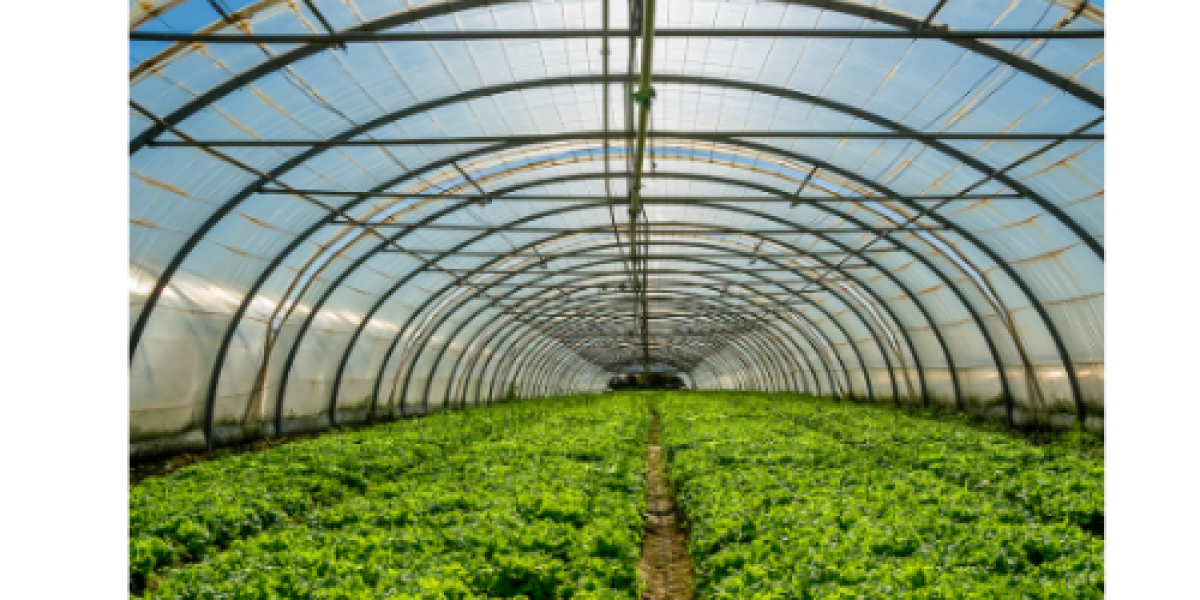The use of greenhouse films has revolutionized modern farming, offering a controlled environment that maximizes crop yield and quality. These films create a protective barrier that regulates temperature, light, and humidity, ensuring plants thrive regardless of external weather conditions. Among the many materials used for greenhouse construction, polyethylene film greenhouses have gained immense popularity for their durability, affordability, and versatility.
Greenhouse films play a critical role in agriculture, offering protection and creating optimal conditions for crop growth. Made from durable plastic materials, these films shield plants from harsh weather, pests, and diseases, allowing year-round farming. Whether sourced from greenhouse plastic manufacturers, used in a polyethylene film greenhouse, or supplied by trusted greenhouse plastic suppliers, these films are indispensable for greenhouse farming.
What is a Greenhouse Film?
A greenhouse film is a specially designed plastic covering used to create an enclosed environment for plants. It traps heat, controls humidity, and protects crops from external environmental factors, ensuring a stable microclimate within the greenhouse.
Greenhouse plastic manufacturers play a pivotal role in the agricultural industry by providing high-quality films designed to meet various farming needs. These films are crafted with advanced technology, ensuring they are resistant to UV rays, harsh weather conditions, and wear over time.
Modern manufacturers understand that not all greenhouses are created equal. Some require films with higher light diffusion to evenly distribute sunlight, while others might need stronger insulation for regions with extreme temperatures. Customization has become a cornerstone of their production, allowing farmers to select greenhouse films tailored to their specific crops and climate.
The innovation doesn’t stop at durability. Many manufacturers now produce eco-friendly films, addressing environmental concerns by incorporating recyclable materials. This dual focus on sustainability and performance has cemented their importance in the agricultural sector.
Typically made from polyethylene, these films are UV-treated for longevity and often include additives to enhance light diffusion and thermal retention.
Benefits of Using Greenhouse Films
Weather Protection: Greenhouse films shield crops from extreme weather conditions such as heavy rain, hail, and frost.
Enhanced Plant Growth: By maintaining a controlled temperature and humidity level, greenhouse films optimize the conditions required for healthy crop growth.
Cost-Effective: Compared to glass greenhouses, polyethylene films offer a more affordable solution while providing similar benefits.
Light Diffusion: Modern greenhouse films are designed to diffuse light evenly, reducing the risk of sunburn on plants and promoting uniform growth.
Pest and Disease Control: The protective barrier created by the film minimizes the entry of pests and reduces the spread of diseases.
Types of Greenhouse Films
Polyethylene Films: Widely used due to their affordability and versatility, polyethylene films are durable and can last for multiple growing seasons. The Polyethylene film greenhouse is a popular choice among farmers for its cost-effectiveness and efficiency.
EVA Films: Ethylene Vinyl Acetate (EVA) films offer better light transmission and thermal insulation but are slightly more expensive than polyethylene options.
Co-Extruded Films: These films are made from multiple layers of plastic, offering enhanced strength, UV protection, and light diffusion properties.
Applications of Greenhouse Films
Crop Cultivation: From vegetables to flowers, greenhouse films support the growth of various crops by providing a controlled environment.
Nurseries: Seedlings and young plants thrive under greenhouse films, which protect them during their initial growth stages.
Aquaponics and Hydroponics: Greenhouse films are essential in these modern farming systems, creating optimal conditions for both plants and aquatic species.
Research Facilities: Greenhouse films are also used in agricultural research to study plant growth and develop new farming techniques.
Choosing the Right Greenhouse Film
Selecting the right greenhouse film depends on factors such as climate, crop type, and budget. Working with reputable Greenhouse plastic suppliers ensures access to high-quality materials tailored to specific farming needs.
Thickness: Thicker films are more durable and resistant to wear but may slightly reduce light transmission.
UV Protection: Films with UV stabilization last longer and provide better protection against harmful radiation.
Anti-Drip Properties: Some films include an anti-drip coating to prevent water droplets from forming and falling on plants, reducing the risk of fungal infections.
Importance of Trusted Suppliers and Manufacturers
Reliable greenhouse plastic manufacturers and suppliers play a crucial role in providing quality products that meet industry standards. They offer a range of options, from standard polyethylene films to advanced multi-layer solutions, ensuring farmers get the best value for their investment.
Partnering with experienced suppliers also provides access to technical support, helping farmers choose the right film for their specific requirements.
Installation and Maintenance
Proper installation of greenhouse films is essential to maximize their effectiveness. Ensure the film is stretched tightly and secured properly to avoid damage from wind or sagging. Regular maintenance, such as cleaning and inspecting for tears or wear, extends the film’s lifespan and ensures continued performance.
Conclusion
Greenhouse films are vital for modern agriculture, offering farmers a reliable solution for year-round cultivation and enhanced crop yield. Whether you’re sourcing materials from greenhouse plastic manufacturers, opting for a polyethylene film greenhouse, or working with greenhouse plastic suppliers, investing in high-quality films ensures long-term benefits. By creating a controlled environment, these films support sustainable farming practices and contribute to global food security.
Frequently Asked Questions
What is the lifespan of a greenhouse film?
Most greenhouse films, especially those made from polyethylene, have a lifespan of 3 to 5 years, depending on their thickness, quality, and exposure to environmental conditions. UV-treated films typically last longer.
How do I choose the right greenhouse film for my crops?
Consider factors like climate, crop type, and budget. Thicker films with UV protection and anti-drip properties are ideal for most farming needs. Consulting with greenhouse plastic suppliers can help you make an informed choice.
What are the advantages of a polyethylene film greenhouse?
A polyethylene film greenhouse is cost-effective, easy to install, and provides excellent light transmission and thermal insulation. It is a durable option that ensures optimal growing conditions for various crops.












